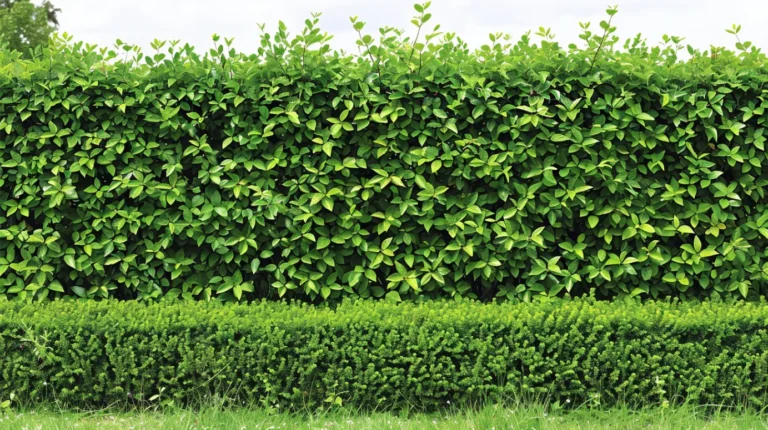Growing and Caring for Black Walnut Trees: A Complete Guide

Are you fascinated by the beauty of the black walnut tree? If you have ever wandered through the eastern portion of the United States, chances are you have come across this majestic tree in the wild. Known for thriving in disturbed places such as roadsides, abandoned fields, and the edges of fragmented forests, the black walnut is a beloved native tree.
But did you know that growing and caring for black walnut trees at home can be both rewarding and relatively easy? In this comprehensive guide, we will delve into everything you need to know about cultivating and maintaining these impressive trees. From understanding the history of the black walnut to learning about propagation, cultivation, managing pests and disease, and even harvesting and preserving the nuts, we’ve got you covered.
What is Black Walnut?
Belonging to a vast nut-producing family that spans across continents, the black walnut tree is a unique member of the walnut genus, Juglans. Known for its slow growth rate and impressive height of over 100 feet, this tree produces delicious nuts enclosed in a tough shell. While the black walnut tree may seem like a perfect addition to any garden, its toxic chemical called juglone can inhibit the growth of certain plants and cause skin irritation. Despite its challenges, the black walnut remains a prized native tree in the United States.
Cultivation and History
The black walnut tree has a rich history intertwined with humans for thousands of years. Used by colonists for its decay-resistant wood and by native peoples for food, medicinal purposes, and dye, the black walnut gained recognition for its valuable timber and nuts. Throughout history, the black walnut has been a symbol of resilience and adaptability, making it a sought-after tree for both landscaping and woodworking purposes.
Propagation Techniques
From Seed
- Collect seeds in early to mid-autumn and remove the thick outer hull.
- Plant seeds in moist soil and allow them to undergo cold stratification over winter.
- Wait for seeds to germinate in spring.
From Cuttings
- Take cuttings with multiple buds and apply rooting hormone.
- Plant cuttings in moist soil and cover with plastic to maintain humidity.
- Monitor for root development and transplant when roots form.
From Seedlings/Transplanting
- Purchase young trees from a reliable nursery or plant nurseries.
- Choose a sunny location with well-draining soil for optimal growth.
- Water trees regularly during establishment and dry spells.
How to Grow Black Walnut Trees
To grow healthy black walnut trees, follow these tips:
– Choose a sunny location with well-draining soil.
– Water trees regularly, especially during dry spells.
– Plant two trees together to improve nut yields.
Following these simple guidelines will ensure your black walnut trees thrive and provide abundant harvests.
Pruning and Maintenance
Black walnut trees require minimal maintenance, especially in fertile, well-drained soils. While pruning is not necessary, it is essential to clear fallen branches and nuts to maintain a tidy garden space. Enjoy the natural beauty of the black walnut tree without the need for extensive pruning efforts.
Black Walnut Cultivars to Select
Explore different cultivars of black walnut trees based on characteristics such as nut production, shell thickness, and pest tolerance. Popular varieties include:
– Black Gem
– Hare
– Rowher
– Sauber #1
– Thomas
Selecting the right cultivar for your specific needs can enhance the overall performance and yield of your black walnut trees.
Managing Pests and Disease
While black walnut trees are typically resistant to pests and diseases, there are a few common issues to watch out for:
– Ambrosia Beetles
– Aphids
– Caterpillars
– Curculios
– Shoot Moths
– Twig Beetles
– Fusarium Canker
– Leaf Spot
– Nectria Canker
– Thousand Cankers Disease
By staying vigilant and implementing appropriate measures, you can protect your black walnut trees from potential threats and ensure their long-term health and productivity.
Best Uses of Black Walnut Trees
Whether you need shade, wildlife habitat, or valuable timber, black walnut trees offer a range of benefits. From woodworking projects to culinary delights, the uses of black walnut trees are as diverse as they are valuable. Embrace the versatility of these trees and explore new ways to incorporate them into your landscape.
Harvesting Black Walnuts
Gather black walnuts as they begin to drop from the tree in late fall. To facilitate hull removal, allow the nuts to soften on the ground before harvesting. Wear gloves to protect your skin and utilize creative methods such as stomping or hammering to remove the tough hulls. Clean and dry the nuts for storage or consumption.
Preserving Black Walnuts
After cleaning and curing black walnuts, store them in airtight containers to maintain freshness. Freezing the nuts before storage can help eliminate any pests or eggs inside the nuts. Label your storage containers with harvest dates to keep track of freshness and quality.
Recipes and Cooking Ideas
The strong, earthy flavor of black walnuts makes them a unique ingredient in various recipes. From baked goods to savory dishes, black walnuts add a distinct taste to any culinary creation. Crack open the nuts using a hammer or nutcracker to access the delicious meat inside. Experiment with different recipes to explore the full potential of black walnuts in your kitchen.
Quick Reference Growing Guide
- Plant Type: Nut tree
- Flower/Foliage Color: Green/green (yellow in fall)
- Native to: Eastern North America
- Water Needs: Low
- Hardiness (USDA Zones): 4-9
- Maintenance: Low
- Bloom Time/Season: September-October (nuts)
- Tolerance: Clay, lean soil, moderate drought, occasional flooding, silty soil
- Exposure: Full sun to part shade
- Soil Type: Deep, rich, sandy loam
- Time to Maturity: 12-15 years (nut production)
- Soil pH: 5.0-8.0
- Spacing: 40-80 feet
- Soil Drainage: Well-draining
- Planting Depth: 1-2 inches (seed), depth of root ball (transplants)
- Attracts: Moths and butterflies including banded hairstreak, regal moth, luna moth
- Height: Up to 100 feet
- Uses: Food crop, lumber, furniture making, medicinal
- Spread: Up to 75 feet wide
All It’s Cracked Up to Be
Growing and caring for black walnut trees can be a rewarding experience with the right knowledge and approach. By understanding the unique characteristics and requirements of these trees, you can create a thriving garden ecosystem centered around the beauty and benefits of black walnut trees. Remember to water your trees regularly, protect them from pests and diseases, and enjoy the bountiful harvests they provide. With proper care and attention, black walnut trees will continue to grace your landscape with their majestic presence for years to come.





